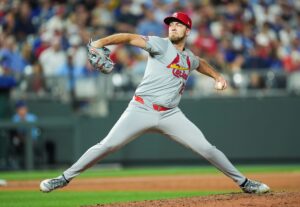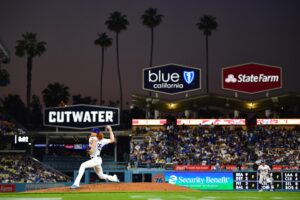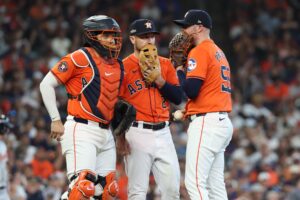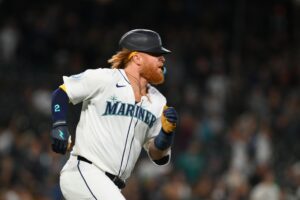The 1970s. An era of flashiness, yet also an era of subtlety. In politics and world history, the Cold War raged forward. The United States did battle with the Soviet Union in a number of rather unconventional ways. In society, the disco world was in full force. Shiny objects were the name of the game. Baseball players searched for a shiny object as well: a World Series title. For three teams, it was a time for dancing on the brightly colored floor. The Cincinnati Reds, Los Angeles Dodgers, and New York Yankees ruled the decade. For other teams, however, it was a muddy, lifeless time. Instead of being “far out,” these teams were a real “bummer.”
One of them happened to be the Atlanta Braves. After some success in Milwaukee, they found inconsistency and heartache down South. In a lot of ways, the Braves decade reflected the popular dances of the era. For one half, the team’s record was always moving from hip to shoulder and back. For the other, they were, essentially, doing the funky chicken. So, let’s begin…
Braves by Decade: 1970s
A Not So Groovy Beginning
The team didn’t change very much before 1970. Lum Harris continued to manage, and most of the players returned. Hank Aaron had yet another spectacular season (.298/.385/.574, 38 HR, 118 RBI, 154 H, 296 TB, 149 OPS+). He was joined by fellow Hall of Famer Orlando Cepeda, who was just as terrific (.305/.365/.543, 34 HR, 111 RBI, 136 OPS+). But they were both upstaged by Rico Carty. The 30-year-old had his best career season, winning a batting title. He finished in the top 10 in MVP voting. His .366 batting average was the best by a Brave since Rogers Hornsby in 1928. So, it is not an understatement to say that he was the best on the team. The offense as a whole finished with a league-leading .270 average.
Sadly, this terrific offense was not bolstered by the pitching at all. The team finished ninth in ERA (4.33) and gave up 185 homers. Staff ace Pat Jarvis posted a respectable 16-16 record with a 3.61 ERA. Unfortunately, everyone else was bottom of the barrel. Not even the presence of Hall of Famers Phil Niekro and Hoyt Wilhelm could save them. Niekro only won 12 contests with an ERA over 4. The aging Wilhelm acted as the closer, yet could only muster 13 saves. In short, the pitching was the main reason for the Braves finishing fifth.
A Roller Coaster Ride
The ups and downs continued in 1971. An offensive backslide was the mark of this season. However, Aaron and catcher Earl Williams combined to hit 80 homers. To put that in perspective, the rest of the team hit 73. Young outfielder Ralph Garr had a breakout season (.343/.372/.441, 219 H, 30 SB, 125 OPS+). The pitching improved to a 3.75 ERA. Unfortunately, the rest of the league improved as well. Despite Niekro posting 15 wins and a 2.98 ERA, the team was lackluster. They finished 10th in ERA and 12th in homers and hits given up. All in all, they wound up third in the standings.
Midway through 1972, Harris departed as manager. The team was 47-57, and attendance was abysmal. Former great Eddie Mathews was called upon to helm things. But he could not turn the ship around. The team finished 70-84, fourth in the standings. Surprisingly enough, Mathews was not let go. He stayed to manage in 1973, guiding the Braves to a fifth-place finish. The offense that season may have been one of the best in team history. It boasted three forty-homer men (Aaron, Davey Johnson, and Darrell Evans). Dusty Baker pounded out 21, and first baseman Mike Lum had 16. But the pitching continued to struggle, posting a league-worst 4.25 ERA.
Aaron’s Shining Moment
However, the team was able to pull themselves up somewhat in 1974. An 88-74 record placed them third in the NL West. But the team’s season pales in comparison to one date: April 8. The day that Hank Aaron finally smashed Babe Ruth’s home run record. Sadly, that was really the only thing to get excited about. The pitching and offense swapped places that season as the hurlers took center stage. The offense, and its abysmal .249 average, was one of the worst in the league. Mathews was ousted midway through the season and replaced by Clyde King. Unfortunately, King would not last long, either. He departed midway through 1975 after a 58-76 start and Connie Ryan took over. A 67-94 record yielded a fifth-place finish. The attendance mark (534,672) was the team’s lowest in a decade. It was also their first year without Aaron’s booming bat.
The franchise’s fortunes had shifted badly. They were now officially doing the funky chicken. 1976 saw yet another new manager, Dave Bristol. He was unable to right the ship, and the team went 70-92. The offense and pitching were terrible. However, first baseman Willie Montanez (.321 avg, 135 H, 114 OPS+) and the reliable Niekro (17-11, 3.29 ERA, 10 CG, 115 ERA+) were bright spots. Former 20-game winner Andy Messersmith also had a good season. But at the end of the day, the team finished last. In fact, they’d find themselves growing quite comfortable in the cellar.
The Chicken Gets Even Funkier for the Braves
1977 was the team’s worst in many years. They went 61-101, posting their first 100-loss season since 1935. Bristol was ousted with two games left. Ted Turner himself managed one game, which the team lost. Vern Benson managed the other, which the team won. The offense did manage to make some improvements. Right fielder Jeff Burroughs had a 40-homer, 100-RBI season. But the pitching was awful (4.85 ERA, 92 ERA+), and the team suffered as a result. The next season was basically the same, although two very familiar faces appeared. Bobby Cox began his first stint as manager, going 69-93. On the field, a young first baseman named Dale Murphy emerged. He struck out 145 times but still managed 23 homers. Unfortunately, the rest of the team lived up to the standard of mediocrity. They finished last.
The Braves improved by three wins in 1979. Unfortunately, it wasn’t enough to pull them out of the bottom. Murphy impressed by lowering his strikeout total and swatting 21 homers. He was joined by right fielder Gary Matthews (.304 avg, 27 HR, 90 RBI, .502 SLG, 128 OPS+) and third baseman Bob Horner (.314 avg, 33 HR, 98 RBI, 135 OPS+). Sadly, the pitching continued to wreak havoc, despite Niekro’s 21-win performance. The team finished 66-94 in Cox’s second year as manager, 23.5 games back of the Reds.
Main Photo:
Embed from Getty Images






